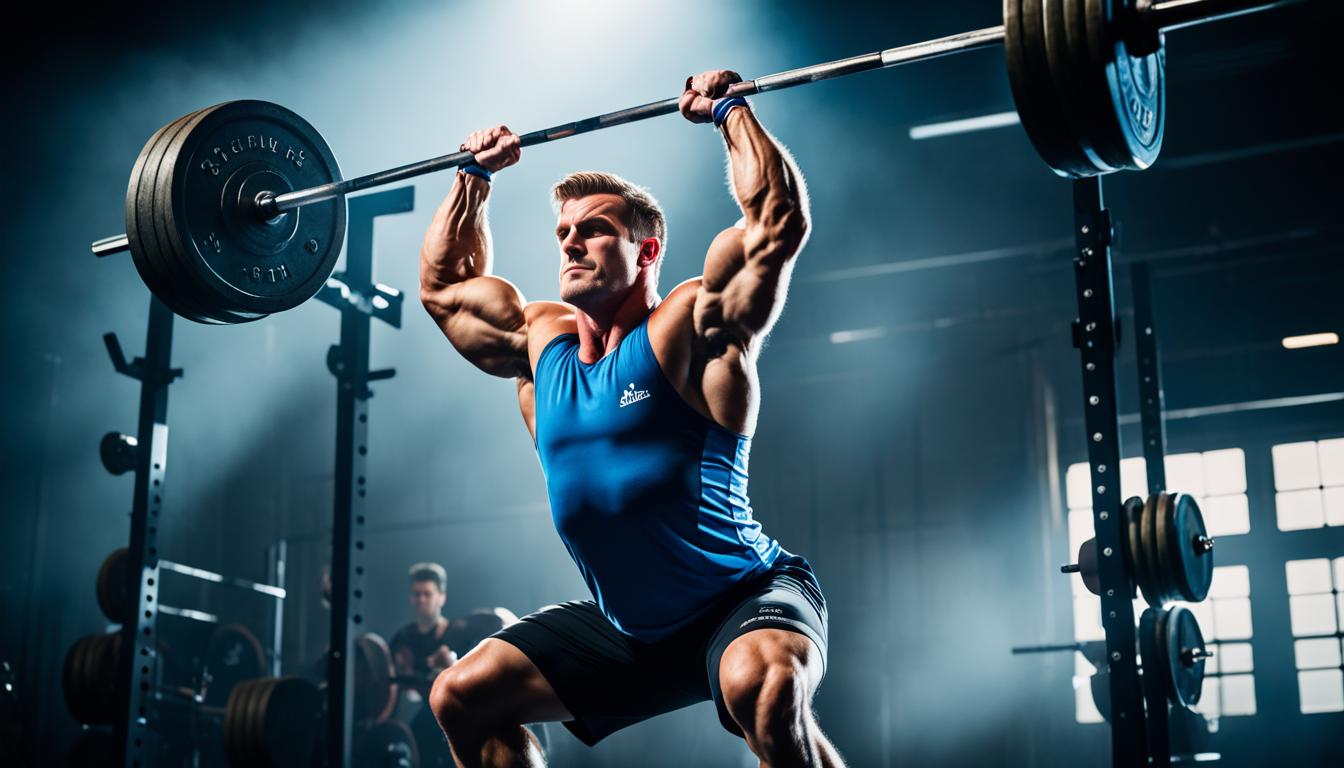Welcome to our comprehensive guide on weightlifting techniques for strength. If you’re looking to elevate your lifting game and achieve your fitness goals, this article is for you. We will explore essential weightlifting techniques, discuss proper form and technique, delve into progressive overload for strength gains, and provide tips for perfecting your technique with assistance exercises. Additionally, we will cover the importance of implementing proper breathing techniques, preventing common weightlifting injuries, and improving flexibility and mobility for better performance. Whether you’re a gym enthusiast or a beginner, this guide will equip you with the knowledge to maximize your strength and make the most out of your gym workouts.
Understanding Proper Form and Technique
Proper form and technique are essential components of successful weightlifting. By maintaining proper form, you not only reduce the risk of injuries but also optimize muscle engagement and achieve better results. In this section, we will explore the fundamental weightlifting techniques that every lifter should master. These techniques include the deadlift, squat, bench press, and overhead press.
The deadlift is a compound movement that targets multiple muscle groups, including the back, glutes, and hamstrings. When performing the deadlift, it is important to keep your back straight, engage your core, and lift with your legs, not your back. This ensures proper form and minimizes the risk of back injuries.
The squat is a foundational exercise that primarily works the muscles of the lower body, such as the quadriceps, hamstrings, and glutes. To execute a squat correctly, start with your feet shoulder-width apart, engage your core, and lower your hips down while keeping your knees in line with your toes. Maintain a neutral spine throughout the movement and push through your heels on the way up.
The bench press is a popular compound exercise that primarily targets the chest, shoulders, and triceps. When performing the bench press, lie flat on a bench, grip the bar slightly wider than shoulder-width apart, lower the bar to your mid-chest while keeping your elbows at a 45-degree angle, and press it back up in a controlled manner.
The overhead press, also known as the military press, focuses on developing shoulder strength and stability. Stand with your feet shoulder-width apart, grip the barbell just outside your shoulders, maintain a neutral spine, and press the bar straight up overhead while keeping your core engaged.
By understanding and implementing proper form and technique in these key exercises, you can maximize your strength gains, prevent injuries, and optimize your overall weightlifting performance.
Incorporating Progressive Overload for Strength Gains
Progressive overload is a fundamental principle in weightlifting that is essential for achieving strength gains and continuous progress. By gradually increasing the intensity and demands placed on your muscles, you can push your body to adapt and grow stronger over time.
There are various methods you can incorporate to apply progressive overload effectively. One of the most straightforward approaches is to increase the weight you lift progressively. Gradually adding more resistance to your exercises challenges your muscles and stimulates further strength development.
Another way to implement progressive overload is by increasing the number of repetitions you perform. By gradually increasing the volume of your training, you can stimulate muscle growth and enhance your strength gains.
Additionally, modifying your training volume is another effective way to incorporate progressive overload. Gradually increasing the total number of sets and exercises you perform in each workout session can put more stress on your muscles and stimulate further strength improvements.
To further intensify your training and challenge your muscles, you can also experiment with advanced techniques such as drop sets, supersets, and pyramid sets. These techniques involve manipulating variables like weight, reps, and rest intervals to increase the demands placed on your muscles and promote strength gains.
Remember, incorporating progressive overload into your weightlifting routine is essential for continuous improvement and preventing plateaus. By gradually increasing the stress on your muscles through various methods, you can achieve sustained progress and maximize your strength gains.
Perfecting Your Technique with Assistance Exercises
When it comes to weightlifting, perfecting your technique is essential for maximizing gains and minimizing the risk of injury. While mastering the basic weightlifting techniques is crucial, incorporating assistance exercises can take your lifting game to the next level. These exercises target specific muscle groups and help address weaknesses or imbalances, allowing you to perfect your overall lifting technique.
One effective assistance exercise is the Romanian deadlift, which primarily targets the hamstrings, glutes, and lower back. By performing this exercise with proper form, you can improve your hip hinge movement pattern and enhance your ability to lift heavier weights in compound exercises like the deadlift and squat.
Another valuable assistance exercise is the Bulgarian split squat, which focuses on the quads, glutes, and balance. This exercise not only improves lower body strength but also helps correct any muscle imbalances between the left and right sides of your body. It can be a particularly beneficial exercise for individuals who tend to favor one leg over the other during compound lifts.
The inclined bench press is a great assistance exercise for targeting the upper chest muscles and improving overall bench press technique. By performing this exercise on an incline, you can emphasize the upper chest fibers and improve your ability to stabilize the weight during pressing movements.
Perfecting Technique with Assistance Exercises
In addition to these specific exercises, there are numerous other assistance exercises that can help you perfect your weightlifting technique. Incorporating assistance exercises into your training routine allows you to target specific muscle groups, address weaknesses, and improve overall lifting technique. By consistently practicing these exercises with proper form and gradually increasing intensity, you can enhance your strength and performance in compound lifts.
Implementing Proper Breathing Techniques
Proper breathing techniques are vital for achieving optimal performance and strength during weightlifting. When executed correctly, these techniques can help you maximize your lifts and enhance your overall workout experience.
One of the key aspects of proper breathing during weightlifting is timing your breaths with specific movements. For example, before initiating a heavy squat, it is essential to take a deep breath in and brace your core to provide stability and support. This technique helps create a solid foundation for the lift and can prevent injury.
Similarly, when performing exercises like the bench press, exhaling during the exertion phase can help you generate more power and maintain control. By exhaling forcefully, you engage your core and activate your chest muscles, allowing you to push through the lift more effectively.
Improving your breathing control requires practice and conscious effort. Focus on maintaining a steady and controlled breath pattern throughout your weightlifting routine. By doing so, you enhance your oxygen intake and provide your muscles with the necessary energy to perform at their best.
It’s important to integrate breathing techniques into your weightlifting routine consistently. As you progress and become more comfortable with these techniques, they will become second nature and greatly contribute to your overall performance.
If you need visual cues to enhance your understanding of proper breathing techniques, refer to the image below:
Preventing Common Weightlifting Injuries
While weightlifting offers numerous benefits, it is essential to prioritize safety to avoid common injuries. In this section, we will address common weightlifting injuries, such as strains, sprains, and overuse injuries, and provide guidance on preventive measures. We will discuss the importance of warm-up exercises, proper mobility work, and listening to your body’s signals to prevent injuries and maintain a long-term, sustainable weightlifting practice.

Improving Flexibility and Mobility for Better Performance
Flexibility and mobility are essential components of weightlifting that are often overlooked but can significantly impact your overall performance. By incorporating specific stretching and mobility exercises into your routine, you can enhance your range of motion, activate muscles more effectively, and reduce the risk of injuries.
One effective method to improve flexibility and mobility is by incorporating dynamic stretches into your warm-up routine. These exercises involve performing controlled, dynamic movements that mimic the motions you will be doing during your weightlifting session. Incorporating dynamic stretches like leg swings, arm circles, or walking lunges can help increase blood flow to your muscles and loosen up your joints, preparing your body for the upcoming workout.
Another beneficial practice is foam rolling, which involves using a foam roller to apply pressure to different muscle groups. By rolling the foam roller along your muscles, you can release tightness and knots, promoting better flexibility and mobility. Foam rolling is particularly effective in targeting areas such as the hamstrings, quadriceps, and back muscles, which tend to become tight and restricted during weightlifting.
Lastly, integrating mobility drills into your cooldown routine can help improve joint mobility and stability. These drills often involve controlled movements that enhance the range of motion in your joints and increase muscle activation. Incorporating exercises like hip circles, shoulder dislocations, or thoracic rotations can improve your overall mobility, allowing you to perform weightlifting movements with greater ease and efficiency.






